Reading Time:
Pathology
Human immunodeficiency virus (HIV), a retrovirus, infects CD4 lymphocytes and destroys them resulting in immunocompromised leading to opportunistic infections and tumours.
Aetiology
Blood borne virus, transmitted through sexual exposure, intravenous drug use, vertical transmission through vaginal delivery, unscreened blood transfusions.
Signs
No specific signs, may have features of opportunistic infections.
Symptoms
Seroconversion illness (2-10 weeks post-exposure): fever, headache, rash, sore throat, lymphadenopathy. First presenting symptoms often due to opportunistic infections.
Investigations
Bloods: HIV test, CD4 count, viral load, screen for other blood borne viruses.
Follow up: Contact tracing .
Treatment
Combined highly active antiretroviral therapy (HAART)
x2 Nucleoside Reverse Transcriptase Inhibitors (NRTIs)
Plus either non-nucleoside reverse transcriptase inhibitors (NNRTI) or boosted protease inhibitor (PI)
Post-exposure prophylaxis: Reduces transmission of HIV
Prognosis
Without antiretroviral therapy progression to AIDS and death occurs within 7-10 years
With antiretroviral therapy, life expectancy is similar to that of a non-HIV infected person. Antiretroviral therapy also reduces the risk of transmission.
Opportunistic infections, drug resistance, AIDS
Key Facts
Lorem ipsum dolor sit amet, sapien platea morbi dolor lacus nunc, nunc ullamcorper. Felis aliquet egestas vitae, nibh ante quis quis dolor sed mauris.
Key Images
Lorem ipsum dolor sit amet, sapien platea morbi dolor lacus nunc, nunc ullamcorper. Felis aliquet egestas vitae, nibh ante quis quis dolor sed mauris.
Key References
Lorem ipsum dolor sit amet, sapien platea morbi dolor lacus nunc, nunc ullamcorper. Felis aliquet egestas vitae, nibh ante quis quis dolor sed mauris.
